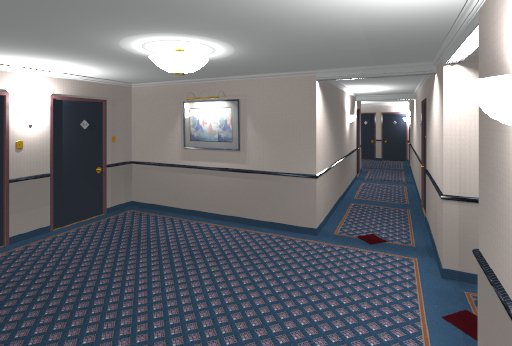3D rendering for 'realistic' look?
Community Forums/Developer Stations/3D rendering for 'realistic' look?
| ||
| Hi all, Are there any easy-to-understand information on 3D rendering for 'realistic' look of a model gile[s] should light models well, but I found my lighted model look 'unreal'.(not related to unreal tournment). Any recommendation is appreciated. Sammy :) |
| ||
| What is realism? The only way your going to get the look you want is really trial and error |
| ||
Don't go for realism, it causes pain... like this randomly selected screenshot from Halo: Or, worse, this randomly selected screenie from Halo 2:  *Shudder* Although, if you mean lighting specifically (since most graphics are tethered around realistic lighting)... my limited experience states that it works best with a model where polygons are as evenly spaced as possible. Also, try not to have too many odd and sharp edges -- tiny creases / wrinkles directly on the mesh can sometimes confuse the renderer. |
| ||
| I take it you're talking about map design, because charcters usually are not lightmapped. realism for realtime rendering is pretty hard to achieve. Global illumination may give you some realism, surely more than simple lightmapping. Of course you need to know what you are doing with the settings of the lights and the illumination renderer (eg. gile[s]) I also think you need a high polycount for realism, but that is exactly the thing you should prevent in realtime rendering like in games. So maybe the Polycount is the part of realism you need to sacrifice for the sake of speed. Textures need to be good. In my opinion nothings wrong with using photografs, if you use them in a clever way. Some things are important for the screen design: all textures need to use a color saturation that is within a certain range. I call this step "saturation equalisation": simply load all textures in your graphics app, display them as thumbnails and adjust the saturation as well as the brightness/contrast to make sure all textures will fit together nicely, concerning color saturation and brightness/contrast. Antialiasing is also vital for realism. But this may be added by the user, if his graphics card offers this feature and is powerful enough. Here's an image rendered by Radiance, one of the global illumination standard apps:  Of course not made for realtime. But I think Blitz could render a gile[s]-lightmapped mesh like this one easily in Realtime. It may be a lot harder to get good looking vegetation like trees and grass etc. If you are investigating the oblivion vegetation system you'll notice they use a lot of tricks to give the impression of high details but they actually use lowpoly models. It's an art discipline by its own to produce good looking low poly trees and grass etc. |
| ||
| this might help also... the lighting in Blitz plays an important role... try adding a directional light to your secen... and play with positioning it, and slightly differening coloring from the ambient light source... a lot of people ignore this aspect of bringing out the 'material' quality in a texture, but i've found that it helped me out a lot... and this is coming from someone who was hypnotized by the DOOM\QUAKE shadered kinda stuff... good luck --Mike |
| ||
| Thank you for your recommendation. :) |
| ||
| On the subject of making lightmaps, I bought the creatively titled Light Map Maker a couple of years ago and got its output working with Blitz3D. I mention this since it's now free: http://www.awingsoft.com/LightMapMaker/lightmapmaker.htm |
| ||
| Hi WendelM, I downloaded lightmapmaker (Company was WindSoft) last years At that time, it could not scale or rotate meshes, just move meshes. Now, it is happy to hear that it's still alive. BTW, 1. Could you scale or rotate meshes with this version? 2. Is it (LightmapMaker/Awakening) comparable with gile[s]? Thanks in advance Sammy :) |
| ||
| You still can't scale or rotate meshes, only lights. It looks like the author just intended this to add lightmaps to pre-composed scenes. That's where I found it useful: for 3D modeling I was using Carrara which couldn't export lightmaps, so I'd import the scene into LMM, place lights, and generate lightmaps for use in Blitz3D. Sorry, I can't compare to gile[s] since I don't use that (though it seems to have a good reputation). |
| ||
| The saturation/contrast point is the most important. |
| ||
| Thanks a lot. :) |
   |